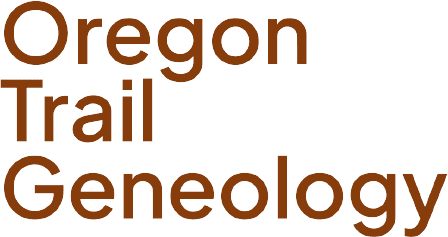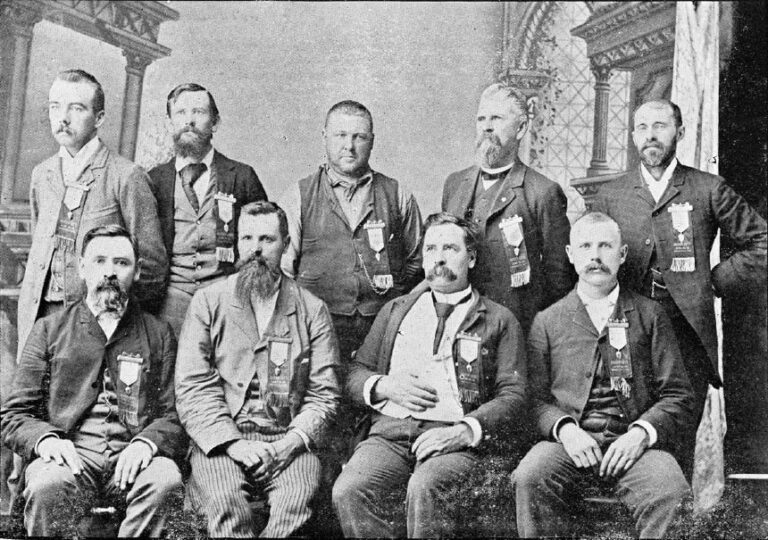Woodmen of the World, Baker City, Oregon 1894
Top Row: Duane Terry, Samuel White, C. Y. Burr, Dr. T. N. Snow, Dr. J. P. Hays
Bottom Row: C. W. James, D. B. Fisk, M. L. Olmsted, W. R. King

Friendship, Love, Truth
The graveyards of our ancestors hold a special fascination for us who weave together the stories of our families. We kneel by the grave of a grandmother five times removed from our reality, the closest we’ll come to the person buried beneath who, through their struggles and strife, begat us. And we wonder, “What was their life really like?” Sometimes the clue is not in the stories we hear or the family trees we assemble, but in the stones that mark their graves.

Here lies a Woodmen of the World, “Dum, Tacet Clamat” (Though Silent, He Speaks)
The Woodmen of the World (WOW) has existed as a fraternal organization since 1890, organized by Joseph Cullen Root who had heard about pioneer woodmen clearing away the forest to provide for their families. He morphed that concept into an organization focused on helping members clear away the financial problems of its members. And though it still serves that function today, he gave his members something perhaps more valuable.
The fraternal order went beyond Root’s intent for the organization, for it fit keenly with the mindset of our early pioneers who looked to conquer the west, tame the bountiful valleys, and spread the influence of Americanism and civilization. These pioneers were not just striving to provide for their families, but in their heart and souls were part of the manifest destiny touted by both religious and political forces back east. Common cause and the struggles to survive banded these pioneers together, and for many, the fraternal organization of Woodmen was not just a means to financial security as Root intended. Instead, the organization was a social “glue” that bonded the men who quite literally fought to claim the West.
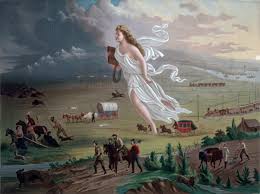
William F. Willingham, in his Family and Community on the Eastern Oregon Frontier (Portland: Oregon Historical Pres, 2005) asked important questions: Who were the settlers hoping to make a new life for themselves in this new land? What were the cultural, ethnic, and demographic characteristics of those attempting to build new communities and raise stable families? What role did women play in this process? Did the basic characteristics of the new overlanders differ from those of the pre-Civil War immigrants to Oregon? And how successful were these settlers at community building?
Woodmen advertised themselves as an organization for the “Jew and Gentile, Catholic and Protestant, the agnostic and atheist.” A shared journey across the Oregon Trail, shared struggles, strife, and loss, and the uncertainty of their future often carried more weight than beliefs, for survival was the stronger bond. And so, this fraternal organization was an important part of building community and creating social bonds. Unified, they were able to build towns, businesses, economy and security for their families in this wild place called Oregon.

Despite American men in the nineteenth century having greater social and geographic mobility than women, the women also joined WOW, or it’s offshoots like Neighbors of Woodcraft, and the celebrations and ritual further bonded the communities. By the early 1900’s the gender imbalance that existed in the mid-1800’s had shifted and more women had influence in shaping the social and commercial fabric of communities.
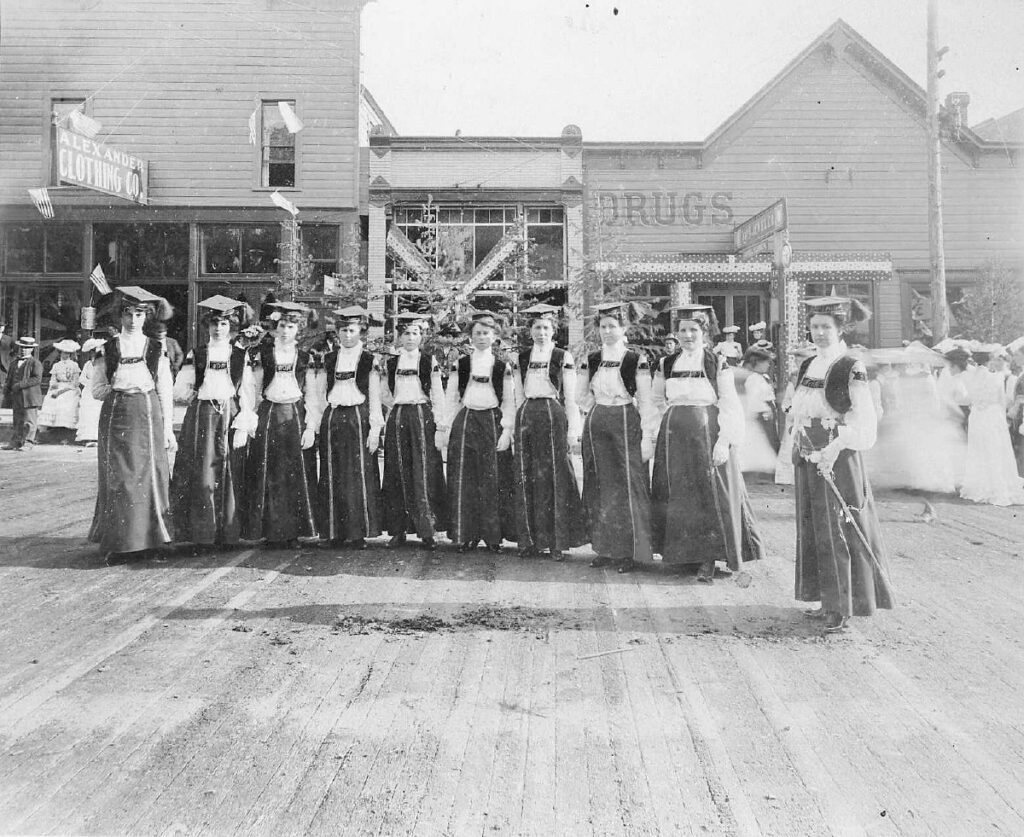
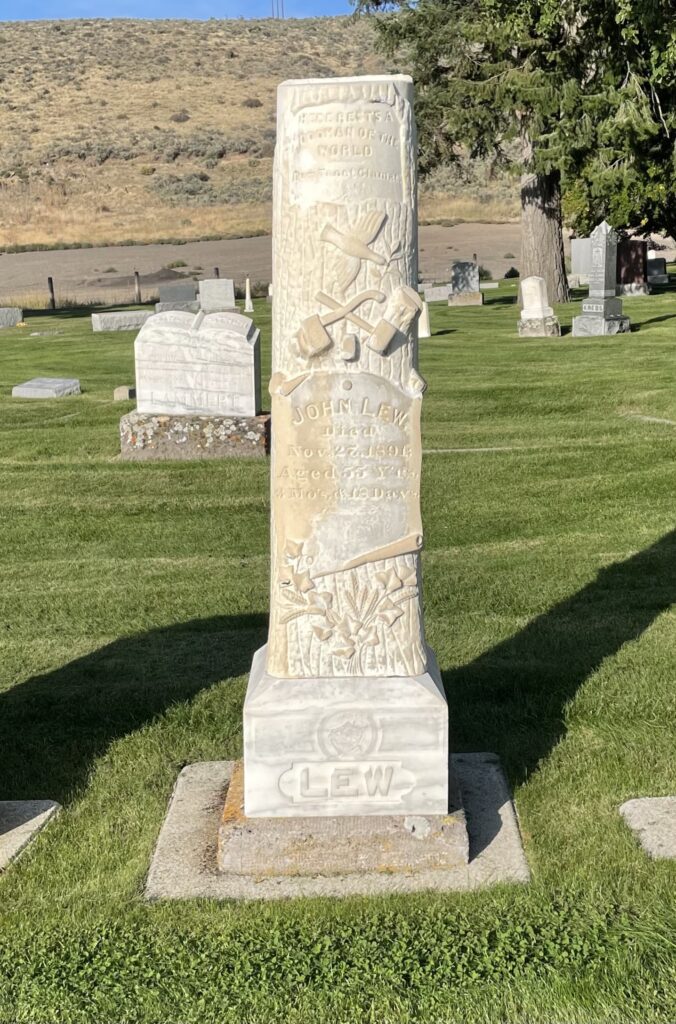
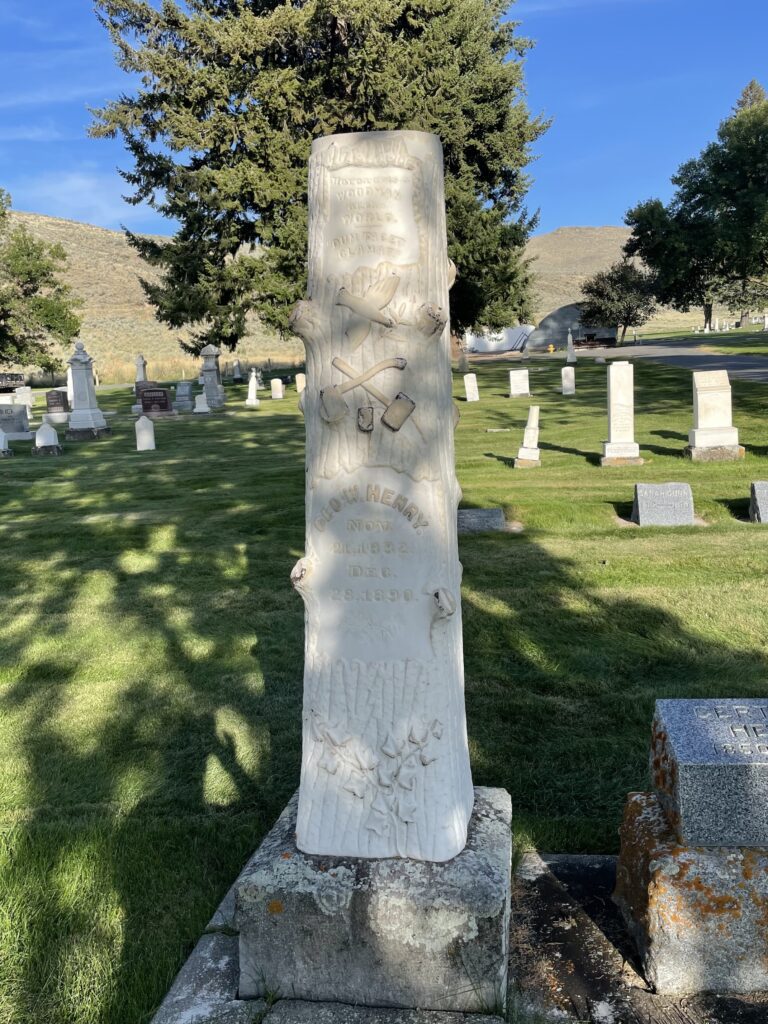
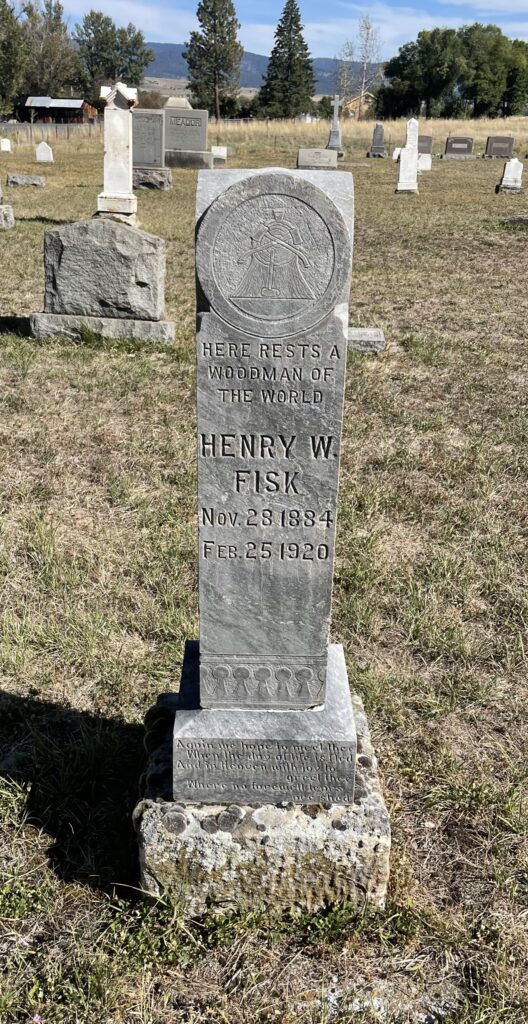
The Woodmen of the World emblem is a sawed-off tree stump, often with a mallet or beetle, an ax, a wedge, the motto Dum, Tacet Clamat, and often the words “Here Rests a Woodman of the World.”
Their fraternal celebrations in life strengthened community, and their tombstones serve as reminders of their contribution to those communities. Dum, Tacet Clamat, though silent, they still speak to their community and remind us of who they were and how they helped build these lands.
A very special thank you to Cheryl Clow and Glenn Palmer who kindly took the time to photograph Woodmen tombstones at Mt. Hope, Prairie City, and Canyon City Cemeteries.
